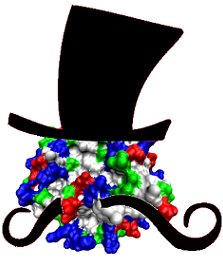On the Complexity Molecular Pathways
I remember the first cellular transduction pathway I encountered at the college level. Well, mainly I recall my bewilderment. Why on earth, I thought, would you need a 10 (or more) step sequence to get some desired result? I remember thinking that the corresponding diagram for the pathway made a Rube Goldberg device seem completely straightforward and rather elementary.
At first glance, it appears that cellular processes are the epitome of an inefficient red-tape laden bureaucratic system. That before messenger "A" can cause response "B" it might need 17 signatures, two stamps of approval, three forms and an official endorsement all in triplicate.
The mechanics and intricacies of these system is simply astounding. When studying most cellular pathways, one would be almost certain to find that:
- Each protein in the pathway will have numerous sites for activation and inhibition.
- Each protein, itself, can be made of multiple proteins, all working in unison.
- Internal messengers will be made to tell the system to "Start" but without any chemical alterations to that messenger, they will eventually cause the system to stop.
- The activity for each step in the pathway can be individually tweaked to create an astoundingly large range of possible rates for the entire pathway.
- Each activated molecule in this pathway is likely to play a key role in some completely different cellular pathway, which will initiate even more cellular responses.
- Despite the number of steps involved the message gets to the end destination on the millisecond time scale.




2 comments:
AH, the wonderment of N-component signal transduction systems! My microbial physiology class was all about this. It's some pretty amazing stuff. So amazing that microbial physiology will be part of my graduate level work (well, I'm hoping).
hi i like your blog its got sum coooooooooooooool stuff just started aint got much
Post a Comment